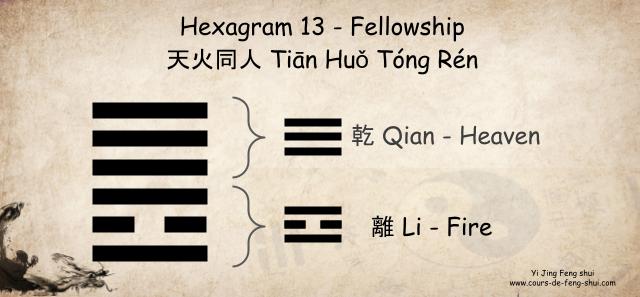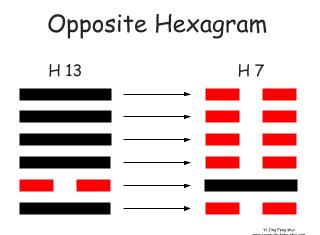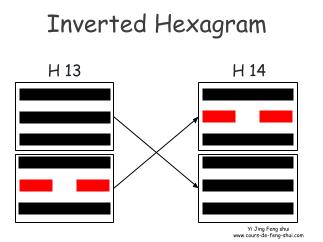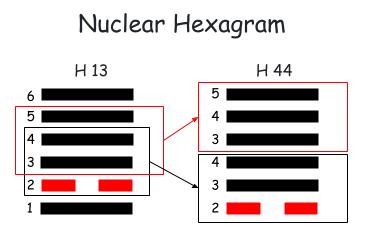
Hexagram 13 of the Yi Jing “Fellowship With Men” is formed of the combination of the upper trigram ☰ Qian (Heaven, representing the father) and the lower trigram ☲ Li (Fire, representing the younger sister). It is often interpreted as a symbol of union and harmony among people, highlighting moments of meeting, mutual acceptance, and collaboration.
Key Interpretations:
- Chinese Name: 天火同人 (Tiān Huǒ Tóng Rén)
- English Translation: Community with Men
- Core Meaning: Union among men, symbolizing harmony, collaboration, and mutual acceptance.
Jia Zi Combination of Hexagram 13
Hexagram 13 is connected with the Ren Yin 壬寅 combination within the sexagesimal cycle, which is the 39th combination. This pairing includes:
- Ren 壬: The Celestial Stem representing Water Yang.
- Yin 寅: The Terrestrial Branch symbolizing the Tiger.
Detailed Interpretation of Hexagram 13:

Opposite Hexagram (錯卦 Cuo Gua):
The opposite hexagram serves as a contrast, representing what is not the solution or the inverse of the current situation. By switching Yang lines to Yin lines (and vice versa), Hexagram 13 transforms into Hexagram 7 – Shi – The Army.

Inverted Hexagram (覆卦 Fu Gua):
The Inverted hexagram reveals the origin of the situation. By reversing the positions of the trigrams, Hexagram 13 becomes Hexagram 14 – Da You – Great Possessing.

Nuclear Hexagram (互卦 Hu Gua):
The nuclear hexagram indicates the core issue or central theme of the situation. Forming this hexagram requires using the four central lines of Hexagram 13, resulting in Hexagram 44 – Gou – Coming to Meet.
Mutant Hexagram (Derived):
The mutation of any line in Hexagram 13 generates a new hexagram, which provides insights into the potential evolution of the situation:
- Line 6 mutation leads to Hexagram 49.
- Line 5 mutation leads to Hexagram 30.
- Line 4 mutation leads to Hexagram 37.
- Line 3 mutation leads to Hexagram 25.
- Line 2 mutation leads to Hexagram 1.
- Line 1 mutation leads to Hexagram 33.

Taoist Yi Jing – Wen Wang Gua
Characteristics of hexagram 13 for the Taoist Interpretation of the Yi Jing following the Wen Wang Gua (Liu yao) divination method.
Hexagram 13 is a hexagram of return (of permanence), of the Li (Fire) family, so Subject is placed on the third line and Object is placed on the sixth line.
The six relatives
- 6th line: 戌 xu Earth – Children
- 5th trait: 申 shen Metal – Wealth
- 4th line: 午 wu Fire – Brothers
- 3rd trait: 亥 hai Water – Officer
- 2nd line: 丑 cabbage Earth – Children
- 1st line: 卯 mao Bois – Parents